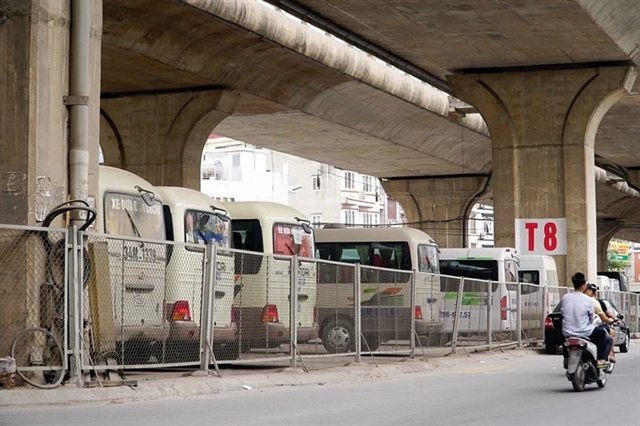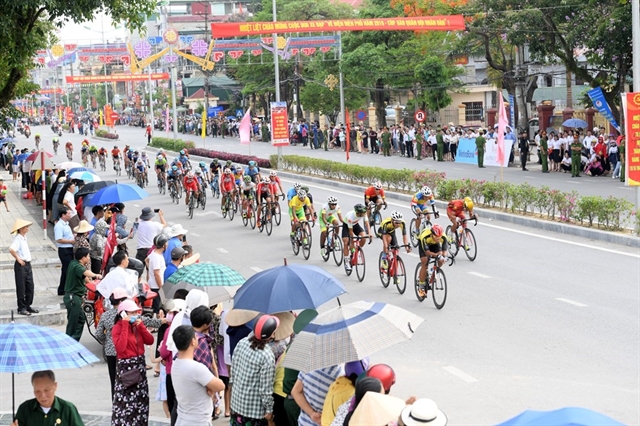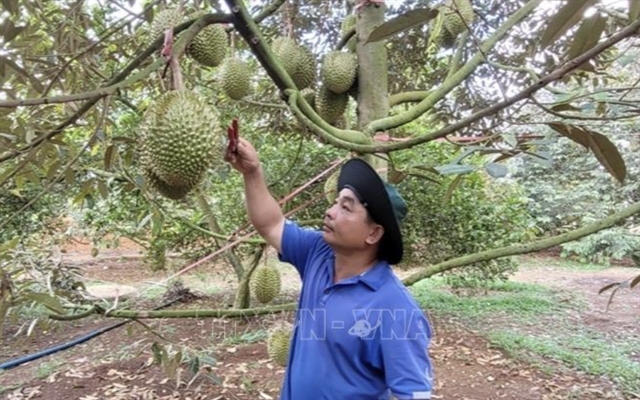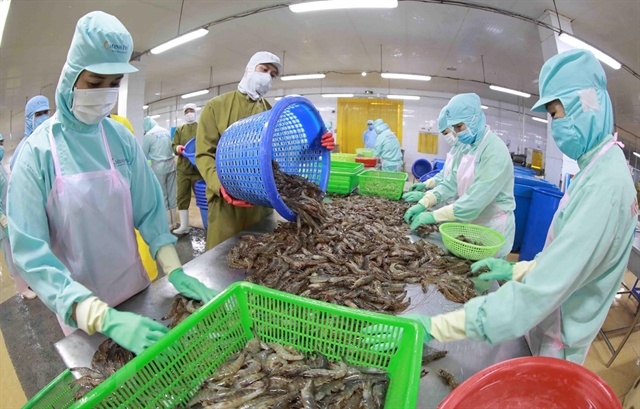 Environment
Environment

A project in Hưng Yên Province to clean-up a village polluted by lead from recycled batteries and reduce the dangerous levels of lead in residents' blood has been shown to be sustainable.
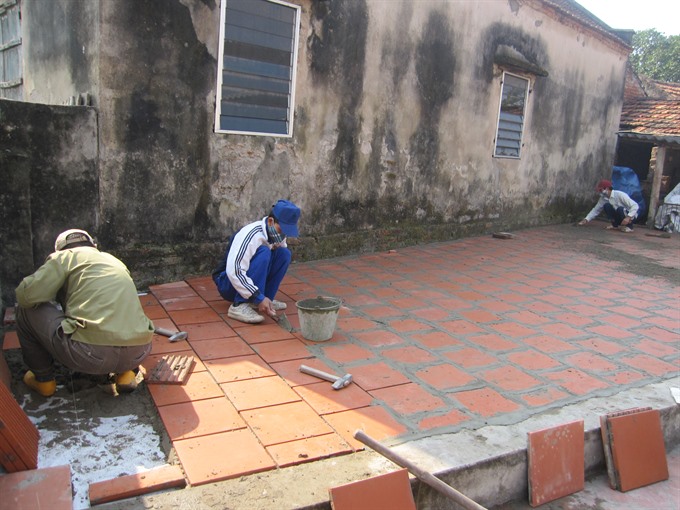 |
| Paving stones are doubled up to contain the deadly soil. – Photo courtesy of Centre for Environment and Community Development |
Khánh Dương
HƯNG YÊN — After a hard day’s work, labourers in the lead recycling industrial area of Chỉ Đạo Commune in northern Hưng Yên Province are required to leave their contaminated clothes at work, bathe and then change into clean clothes in a changing room before going home. The hygiene helps eliminate lead contamination that may affect other people.
The separate industrial zone was created by moving all lead recycling households out of Đông Mai Village by the end of 2015.
Lead was recycled in the residential area of Đông Mai Village for more than 40 years. Residents were surrounded by piles of batteries that were broken up and smelted down for their lead content.
Chemicals were directly discharged into the environment, absorbed into the soil and water sources and diffused into the air.
A series of health check-ups by scientists showed the lead had serious impacts on human health. A comprehensive study of exposures was conducted by the Health Ministry’s National Institute of Occupational and Environmental Health and the University of Washington School of Public Health in 2011.
All of the 109 village children tested had lead levels in the blood exceeding 10 µg/dL, a level of concern recorded by the US Centres for Disease Control and Prevention.
Thirty three out of the children had blood levels exceeding 45 µg/dL, which meant that their posisoning had reached a medium or high level.
The shocking statistics prompted scientists to take action to save human - and environmental - health. And they made changes. The changing room for workers was one of their contributions.
The intervention was jointly implemented by US and Vietnamese researchers from Pure Earth and Việt Nam’s Centre for Environment and Community Development between July 2013 and February 2015. Working on a budget of US$118,750, the project outcomes and follow-up results, released recently, show its sustainability.
Under the project, contaminated yards at local homes have been covered with compacted clean soil, alluvial soil, clean sand, paver stones or concrete to isolate the contamination from leaking out and affecting humans and animals.
This type of soil mitigation was applied at 49 households highly contaminated with lead. Capping with a clean layer soil of more than 10cm is an internationally accepted approach to dealing with such contamination and has been used in the United States and Australia, according to the research report.
In addition to the homes made safe by the project, 47 other home-owners spent their own money following the project’s protocol.
Dương Thị Tơ, director of Centre for Environment and Community Development said: “If all contaminated soils were moved to another place, the process would be enormously costly. We use a simple and optimal solution, which is low-cost.”
According to researchers, at the close of the project in 2015, average surface soil-lead concentrations in all 96 targeted yards were confirmed to be below the clean-up threshold value of 100mg/kg.
This compares with average soil concentrations of 3,940 mg/kg before the intervention. In 2016, the research team measured 20 randomly selected points in the village and was unable to identify lead in surface soils above the instrument detection limit of 5mg/kg.
Local authorities paved village roads using local budget and mobilising funds from enterprises.
Trịnh Văn Hiến, a resident of Đông Mai Village told Việt Nam News: “Now I feel the air fresher than it was 10 years ago. Main roads, alleys and every local yard look cleaner.”
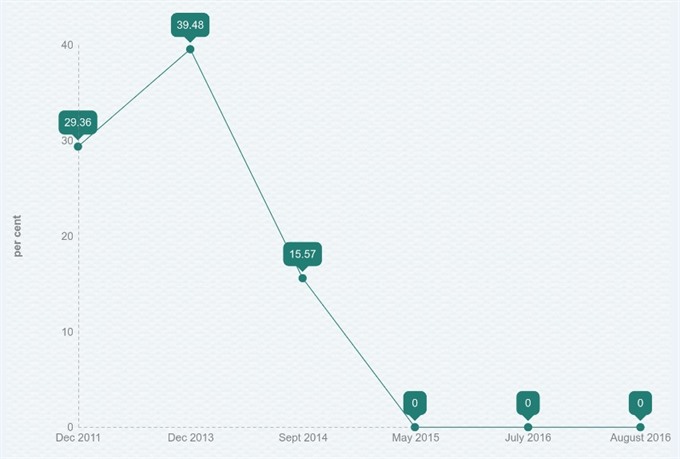 |
| Percentage of lead-contaminated children at medium and high level (more than 45 µg/dL) in Đông Mai Village through the years - before and after intervention. – VNS Infographic Khánh Dương |
Positive improvement
More importantly, the intervention has resulted in positive reduction in the lead blood levels of local people.
Blood lead levels in 196 children below six years old fell by an average of 67 per cent from a median of 40.35 µg/dL in late 2013 to 13.3 µg/dL in the middle of 2015.
Lỗ Văn Tùng, vice head of Department for School Hygiene and Health at the National Institute of Occupational and Environmental Health, one of the researchers, said that the effort to help locals release the lead in their blood did not end there.
The institute, in collaboration with Pectin Technology Company, gave free medicine called Pectin complex to 333 children and 107 labourers in July and August 2016. “Positive results were seen after two months of taking the medicine,” he said.
A total of 118 children taking the medicine had their lead levels fall from 20.9 µg/dL to 16.5 µg/dL. And 44 labourers had their lead levels decrease from 43.17µg/dL to 31.55 µg/dL. Nearly 60 per cent of children and nearly half the labourers who took the medicine said that their health had improved.
Researchers said that the success of the project was also due to people becoming aware, keeping dust out of their homes and keeping their homes clean.
Bret Ericson, a Pure Earth researcher, said low-cost, rapid and well-coordinated interventions could be readily applied elsewhere to significantly reduce lead poisoning.
“I presented the findings recently to the Department of Environment in Bangladesh. We are working with many countries, such as India, trying to replicate the experience from Việt Nam. In Zambia, we applied these lessons recently to protect the health of thousands of people,” Bret said.
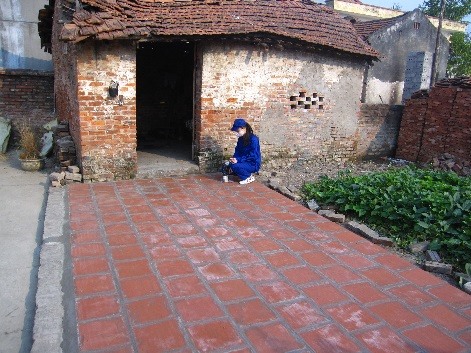 |
| Checking lead level in the soil. — Photo courtesy of Centre for Environment and Community Development |
More needs to be done
Tùng said that although the environment and health of local residents had been improved, there were still potential health risks from the untreated lead slag dump stored in the village. Technical solutions must be studied to remove this waste.
Workers in the industrial area still face the risk of being poisoned with lead and can take lead back home if they do not clean their clothes and shoes carefully.
They must strictly follow hygiene regulations at work, use protective equipment, such as specialised masks, boots, follow personal hygiene and change clothes before leaving work. They are absolutely not allowed to smoke, cook or eat at work because these activities create conditions for lead to be distributed, Tùng said.
“We also need to assess the long-term impacts of the intervention by testing blood level of vulnerable groups such as residents, workers and children below six years old.”
Dr Dương Khánh Vân, Tùng’s college at the National Institute of Occupational and Environmental Health is pushing for the separate lead recycling area to be strictly controlled so that its emissions are not released into the air and waste from the area does not spread. — VNS

